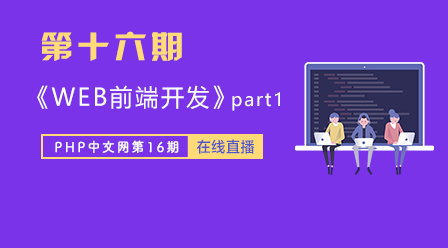current location:Home>Download>Learning resources>php e-book>Scanned version of "How to Cultivation as a Java Programmer" [PDF]

Scanned version of "How to Cultivation as a Java Programmer" [PDF]
| Classify:Learning materials/php e-book | Release time: 2018-03-01 | visits: 2811355 |
| Download: 604 |
Latest Downloads
Fantasy Aquarium
Girls Frontline
Wings of Stars
Little Flower Fairy Fairy Paradise
Restaurant Cute Story
Shanhe Travel Exploration
Love and Producer
The most powerful brain 3
Odd Dust: Damila
Young Journey to the West 2
24 HoursReading Leaderboard
- 1Shytoshi Kusama Reaffirms Anonymity Stance, Emphasizes Community Focus Over Individual Recognition
- 2Tools & Resources [Live Doc]
- 3Easily manage and install your private Go modules
- 4Introduction to HUAWEICare+ service benefits
- 5KTC "25GR950" 24.5-inch monitor is now available: 1080P 180Hz Fast IPS, 579 yuan
- 6Huawei freebuds
- 7Red Dragon KS87 three-mode mechanical keyboard is now available: Gasket structure, 4000 mAh battery, 148 yuan
- 8I curate a daily newsletter with resources about Golang - Daily Golang. Here are the latest ssues of the newsletter
- 9What Are the Key Differences Between PHP and JavaScript for Web Development?
- 10Feizhi Octopus 4 "Black Myth: Wukong " co-branded controller is available for pre-sale for 699 yuan: "world's first" force-adjustable alloy rocker, black and gold color
- 11What's wrong with the iPhone bangs not flashing when charging?
- 12Android King! Samsung Galaxy S25 Ultra battery confirmed: 5000mAh capacity maintained
- 13Bitcoin Nurses Sharp Losses, Lagging Global Stocks as US Politics Whipsaw Token
- 14What's the use of the Three Kingdoms plan to regulate hundreds of workers in the world?
- 15ASIC Shuts Down 600 Crypto Scams in 12 Months, Warns of AI-Driven Fraud Tactics Targeting Investors
Latest Tutorials
-
- Go language practical GraphQL
- 1292 2024-04-19
-
- 550W fan master learns JavaScript from scratch step by step
- 2698 2024-04-18
-
- Getting Started with MySQL (Teacher mosh)
- 1212 2024-04-07
-
- Mock.js | Axios.js | Json | Ajax--Ten days of quality class
- 2071 2024-03-29
How to train Java programmersIt was originally a training note prepared for newcomers in the foreign exchange IT department of Deutsche Bank. The book is divided into four parts. The first part comprehensively introduces the new features of Java 7. The second part explores key Java programming knowledge and technologies. The third part discusses new languages and multi-language programming on the JVM. The fourth part covers platform and multi-language programming. Knowledge put into practice. Starting from the introduction of the new features of Java 7, Java programmers' training covers the most important technologies in Java development, such as dependency injection, test-driven development and continuous integration, explores non-Java languages on the JVM, and explains in detail Multilingual projects, especially those involving the Groovy, Scala and Clojure languages. In addition, the book contains a large number of code examples to help readers understand the Java language and platform from practice.
How to practice as a Java programmer Table of Contents:
Part One Developing with Java 7
Chapter 1 First introduction to Java 7
1.1 Language and Platform
1.2 Coin project: everything is concentrated
1.3 Modifications in the Coin project
1.4 Summary
Chapter 2 New I/O
2.1 A brief history of Java I/O
2.2 The cornerstone of file I/O: Path
2.3 Processing directories and directory trees
2.4 NIO.2 file system I/O
2.5 Asynchronous I/O operations
2.6 Integration of Socket and Channel
2.7 Summary
Part 2 Key Technologies
Chapter 3 Dependency Injection
3.1 Knowledge injection: understanding IoC and DI
3.2 Standardized DI in Java
3.3 DI reference implementation in Java: Guice 3
3.4 Summary
Chapter 4 Modern Concurrency
4.1 Introduction to Concurrency Theory
4.2 Block Structure Concurrency (Before Java 5)
4.3 Building blocks of modern concurrent applications
4.4 Control Execution
4.5 Branch/Merge Framework
4.6 Java Memory Model
4.7 Summary
Chapter 5 Class Files and Bytecode
5.1 Class loading and class objects
5.2 Using method handles
5.3 Check class files
5.4 Bytecode
5.5 invokedynamic
5.6 Summary
Chapter 6 Understanding Performance Tuning
6.1 Performance terminology
6.2 Pragmatic performance analysis method
6.3 What went wrong? Why we worry
6.4 A timing problem from hardware
6.5 Garbage Collection
6.6 JIT compilation of HotSpot
6.7 Summary
Part 3 Multi-language programming on JVM
Chapter 7 Alternative JVM Languages
7.1 Is Java too stupid? Pure slander
7.2 Language Ecology
7.3 Multi-language programming on JVM
7.4 How to choose a good non-Java language
7.5 JVM support for alternative languages
7.6 Summary
Chapter 8 Groovy: Java’s Dynamic Companion
8.1 Getting started with Groovy
8.2 Groovy 101: Syntax and Semantics
8.3 Differences from Java--Newbie Trap
8.4 Groovy features that Java does not have
8.5 Cooperation between Groovy and Java
8.6 Summary
Chapter 9 Scala: Simple but not simple
9.1 A quick tour of Scala
9.2 Can Scala be used in my project
9.3 Let the code bloom again with Scala
9.4 Scala Object Model: Similar but Different
9.5 Data structures and collections
9.6 Introduction to actors
9.7 Summary
Chapter 10 Clojure: Programming Safer
10.1 Introduction to Clojure
10.2 Finding Clojure: Syntax and Semantics
10.3 Using functions and loops
10.4 Clojure Sequences
10.5 Interoperability between Clojure and Java
10.6 Clojure Concurrency
10.7 Summary
Part 4 Multilingual Project Development
Chapter 11 Test Driven Development
11.1 Overview of TDD
11.2 Test avatars
11.3 ScalaTest
11.4 Summary
Chapter 12 Build and Continuous Integration
12.1 Meet Maven 3
12.2 Maven 3 Getting Started Project
12.3 Build Java7developer project with Maven 3
12.4 Jenkins: Meeting CI needs
12.5 Maven and Jenkins code metrics
12.6 Leiningen
12.7 Summary
Chapter 13 Rapid Web Development
13.1 Problems with Java Web Framework
13.2 Criteria for selecting a web framework
13.3 Getting started with Grails
13.4 Grails Quick Start Project
13.5 Dive into Grails
13.6 Getting Started with Compojure
13.7 Am I an otter
13.8 Summary
Chapter 14 Stay Excellent
14.1 Expectations for Java 8
14.2 Multi-language programming
14.3 Future concurrency trends
14.4 New directions for JVM
14.5 Summary
Appendix A java7developer: Source code installation
Appendix B glob pattern syntax and examples
Appendix C Installing alternative JVM languages
Appendix D Download and Installation of Jenkins
Appendix E java7developer: Maven POM











![[Web front-end] Node.js quick start](https://img.php.cn/upload/course/000/000/067/662b5d34ba7c0227.png)
















